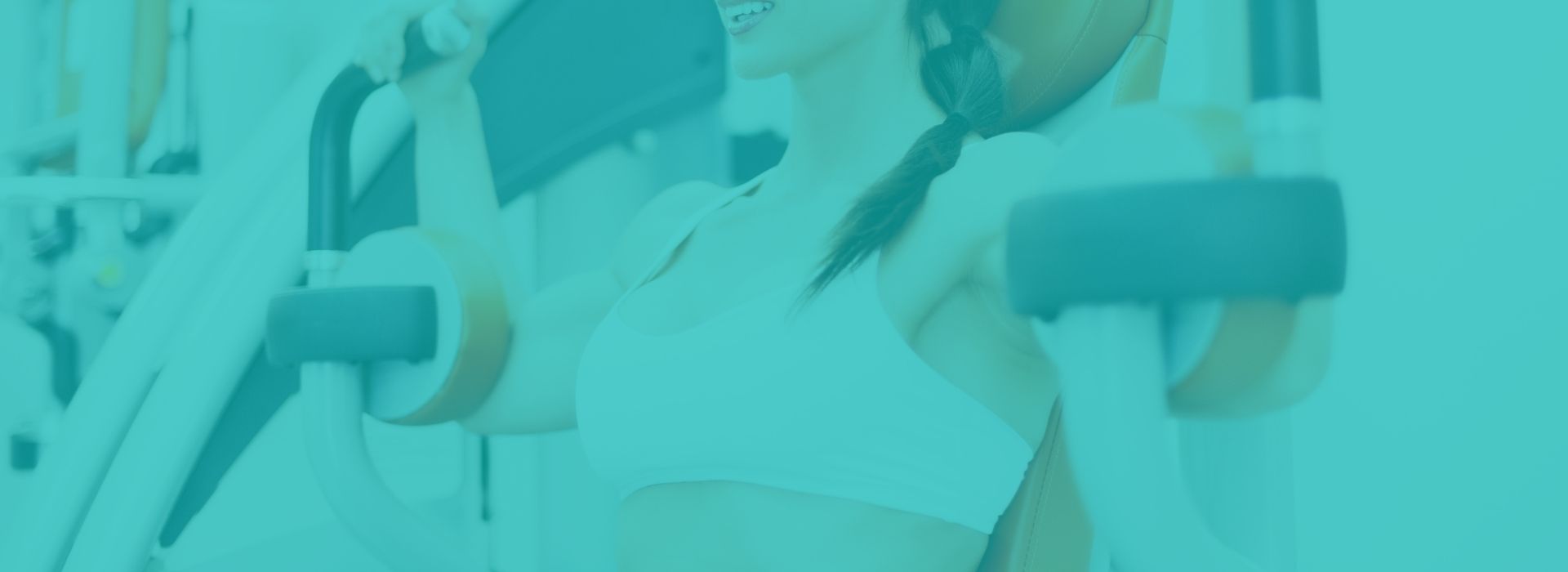Pectoralis Major Muscle Strains are common especially when training the pecs. The Pec Major is the larger muscle anterior to the chest wall and is susceptible to strains and tears.
There is a growing trend that several young men share, an obsession with the perfect chest and hence they spend a significant proportion of their time training on their “pecs”.
It appears that poor exercise technique has been causing a great number of shoulder injuries; in particular, injuries to the pectoralis (pec) major muscle. One of the worst of these chest injuries is a ruptured pec major muscle.


WHAT IS THE PECTORALIS MAJOR MUSCLE?
Pec Major is the large muscle making up the bulk of the front of the upper chest region. It originates from the breastbone (sternum) and collarbone (clavicle) before attaching into the top of the arm bone (humerus).
The upper part of the Pec Major helps to raise the arm and rotate it inwards (flexion and medial rotation), and brings the arm across the body (horizontal adduction).
The lower part of the pec major can assist with bringing the raised arm back down and across the body (extension and adduction).
Pectoralis Major is an anterior stabilising muscle of the shoulder.
HOW CAN THE PEC MAJOR STRAIN OR TEAR?
The primary mechanism of Pec Major tears is the classic bench press. This exercise begins with the bar pushed straight up above the body. The bar is then slowly lowered towards the chest before being pushed back up to the starting position.
Most injuries occur as the weight is lowered down to the chest
The muscle normally helps to ‘brake’ or slow down the motion, preventing
the weight from falling on the chest. If this eccentric contraction (where the muscle lengthens in a controlled fashion) is uncoordinated, either because of muscle fatigue or weakness, the weight is allowed to slip to one side resulting in a sudden contraction of the Pec Major, leading to tear or rupture.
The risk of occurrence of this injury is increased when the elbows are allowed to drop lower than the body (as shown in the picture below) during this manoeuvre.

SIGNS, SYMPTOMS AND COMMON PRESENTATION OF PEC MAJOR TEARS.
Commonly the patient presents with the classic history of a tearing sensation in the underarm (axilla). On examination, there is local tenderness, bruising and loss of the usual contour of the chest. Weakness of the arm in flexion, adduction and medial rotation after an injury. There is likely to be pain in the chest and front of shoulder, some swelling and bruising.
Muscle strains can be graded depending on the severity of tissue damage;
Grade 1 will lead to a small amount of muscle damage resulting in some pain and discomfort but still allowing full function.
Significant tissue damage leading to a moderate loss in movement is a Grade 2 pec major strain.
Grade 3 muscle strains will be the muscle fibres have been torn resulting in a complete rupture and major loss in function.
The majority of pec major muscle strains are Grade 2, meaning that there is significant damage necessitating pec major repair. With increased severity of muscle strains, there can often be a visible deformity in the chest and if left untreated significant muscle wasting.
Another source of muscular chest pain can arise from the Pectoralis Minor muscle which has a slightly different presentation and has various referral pain patterns.

HOW CAN I TEAR MY PEC MAJOR MUSCLE?
There are many things that can predispose or help lead to a pec major muscle tear. Having a good understanding on how best to avoid any unnecessary risks will help reduce the likelihood of a significant injury.
• A poor lifting technique – strength training for the pec major muscle is the primary mechanism of injury, it is important to ensure technique is a primary focus.
• Muscle imbalances – excessive tightness or weakness around the neck, shoulder, chest and back can lead to poor movement patterns.
• Poor training regime – gradual increase in load, amount of training and appropriate rest is important to allow appropriate time for tissue adaptations and avoid dangerous training habits.
• Lack/Poor rehabilitation post an old injury to the shoulder or chest.
• The use of steroids will weaken the tendons in the body which will increase the risk of a rupture/failure.
PHYSIOTHERAPY MANAGEMENT PECTORALIS MAJOR MUSCLE TEARS
PHASE 1: REDUCE INFLAMMATION, PROTECT TISSUE
Aim: Decrease pain in the area, allow time for tissue to undergo healing process and decrease ongoing stress to the pec major muscles.
- muscle tear – Relative rest, Ice, Compression and Elevation (helps reduce the inflammation to the injured tissue allowing for a quicker recovery time).
- Effleurage massage can help reduce swelling to the area.
- Pain free mobility exercises retain as much range of motion as possible.
PHASE 2: RESTORE FULL RANGE OF MOTION
Aim: Regain full pain free range of motion in the shoulder.
- As above.
- Joint mobilisations at the shoulder.
- Muscle releasing strategies to maintain good posture and help aid appropriate movement patterns.
- Pec major stretches – should not stretch to the point of pain (only to comfortable stretch feeling).
- Begin strengthening exercises at the shoulder and chest (isometric initially – should be pain free).
PHASE 3: GRADUAL INCREASE IN STRENGTH/ADDRESS MUSCLE IMBALANCES
Aim: Regain full function in the muscle and address biomechanical predisposing factors for injury.
- A thorough pec muscle tear recovery program addressing muscle imbalances around the shoulder.
- Begin a gradual build of strength training (increase in weight, amount of training).
- Technique correction where applicable.
- Posture correction.
- Continue muscle releases through the shoulder, neck, chest and back.
- Provide adequate self-management strategies and pre-exercise routine.
Note: Grade 1 muscle injuries can expect a full return to function within a week, once symptoms have subsided. With grade 2 strains the return to full activity can be significantly slower, depending on the severity, return can range from 2 – 6 weeks.
In grade 3 strains, surgical intervention is recommended and required to return to full function. This process can take a considerable amount of time with most returning to pre-injury activity levels after 9-12 months.
SURGICAL REHABILITATION OF A GRADE 3 RUPTURE OF THE PECTORALIS MAJOR
PHASE 1: PROTECT AND REPAIR (WEEK 0 – 4)
Aim: Control pain, protect the surgical site and avoid any post-op complications.
- The shoulder is protected in an arm sling.
- Range of motion exercises for surrounding joints (Elbow, wrist, hand, neck).
- Gentle pendulum exercises for shoulder.
PHASE 2: RANGE OF MOTION (WEEK 4 – 8)
Aim: Gradual increase of range of motion in the shoulder.
- Continue previous therapeutic exercises.
- Begin active assisted range of motion and passive range of motion exercises.
- Isometric strengthening exercises.
PHASE 3: INITIAL STRENGTHENING (2 – 4 MONTHS)
Aim: Begin strengthening and try and achieve full range of motion.
- Progressive resistance training at the elbow (biceps and triceps).
- Light resistance at the shoulder (use of resistance bands).
- Begin wall push ups (Progressing from wall to lower surfaces e.g. wall to table).
- start light resistance training at shoulder and back (no pec fly’s or bench press).
PHASE 4: ADVANCED STRENGTHENING (4 – 6 MONTHS)
Aim: Progress pec major repair with strengthening exercises and begin to work on functional activities.
- Increasing resistance in above exercises.
- Can begin to add pec exercises back into resistance training (very light weight and no bench press).
- Large focus on technique and learning good movement patterns
PHASE 5: GRADUAL RETURN TO FULL FUNCTION (6+ MONTHS)
Aim: Gradual return to previous activities/sports.
- Increase resistance with exercises.
- Can begin bench press exercise with progressive increase in reps and load.
- Begin sport specific exercise as tolerated – avoid large spikes in training load and always assess post-exercise soreness.
Find Comprehensive CHEST PHYSIOTHERAPY REHABILITATION WITH THE EXERCISE PHYSIOLOGY TEAM AT PIVOTAL MOTION. BOOK AN APPOINTMENT ONLINE OR CALL US TODAY ON 07 3352 5116.
Frequently Asked Questions – Pectoralis Major Muscle Strains
How long does pec muscle tear recovery take?
Recovery time will depend on the extent of the injury and your body’s healing rate. Lower-grade tears can frequently take between 4-6 weeks to heal while higher-grade tears can take between 12-16 weeks.
What does pec major repair involve?
Generally, a range of exercises that combine strength, endurance and mobility training are recommended. The specific treatment will vary from individual to individual. Get in touch with our team and discuss your options. Schedule an appointment online or call 07 3352 5116 today.

